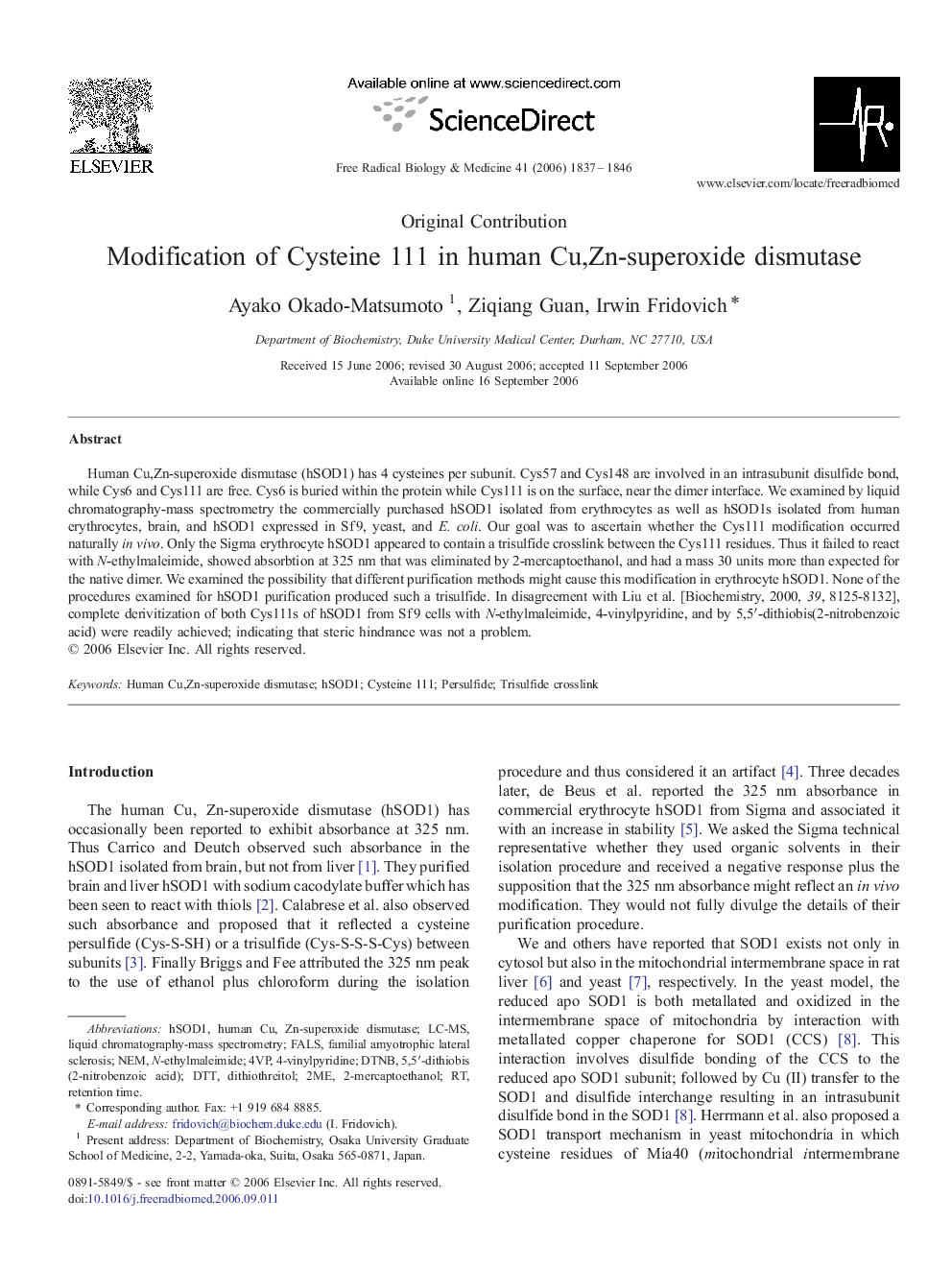| Article ID | Journal | Published Year | Pages | File Type |
|---|---|---|---|---|
| 1911949 | Free Radical Biology and Medicine | 2006 | 10 Pages |
Human Cu,Zn-superoxide dismutase (hSOD1) has 4 cysteines per subunit. Cys57 and Cys148 are involved in an intrasubunit disulfide bond, while Cys6 and Cys111 are free. Cys6 is buried within the protein while Cys111 is on the surface, near the dimer interface. We examined by liquid chromatography-mass spectrometry the commercially purchased hSOD1 isolated from erythrocytes as well as hSOD1s isolated from human erythrocytes, brain, and hSOD1 expressed in Sf9, yeast, and E. coli. Our goal was to ascertain whether the Cys111 modification occurred naturally in vivo. Only the Sigma erythrocyte hSOD1 appeared to contain a trisulfide crosslink between the Cys111 residues. Thus it failed to react with N-ethylmaleimide, showed absorbtion at 325 nm that was eliminated by 2-mercaptoethanol, and had a mass 30 units more than expected for the native dimer. We examined the possibility that different purification methods might cause this modification in erythrocyte hSOD1. None of the procedures examined for hSOD1 purification produced such a trisulfide. In disagreement with Liu et al. [Biochemistry, 2000, 39, 8125-8132], complete derivitization of both Cys111s of hSOD1 from Sf9 cells with N-ethylmaleimide, 4-vinylpyridine, and by 5,5′-dithiobis(2-nitrobenzoic acid) were readily achieved; indicating that steric hindrance was not a problem.
